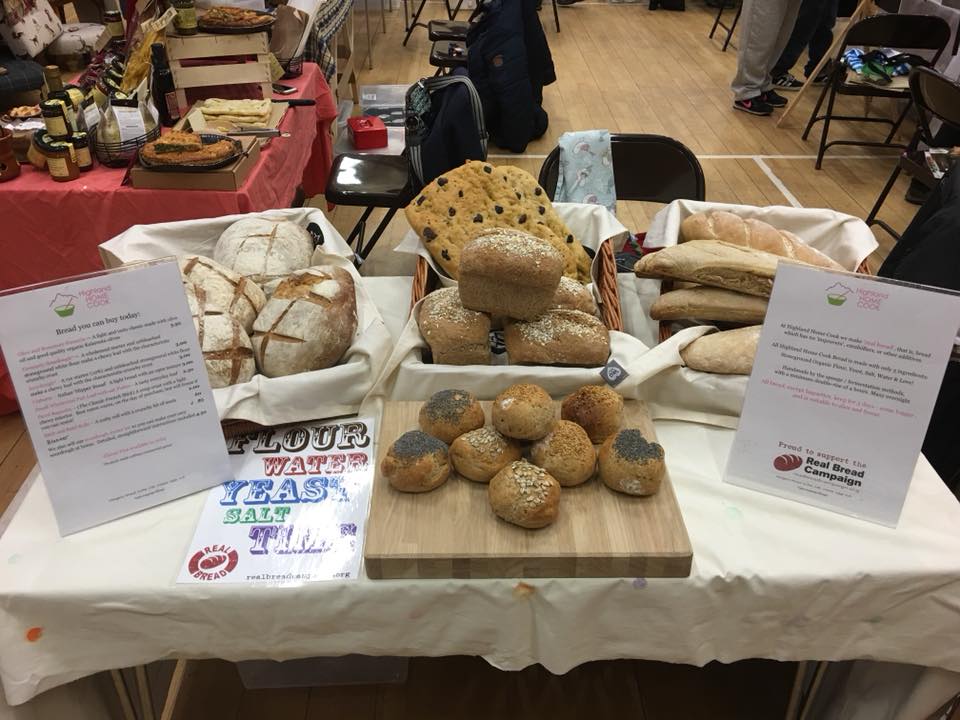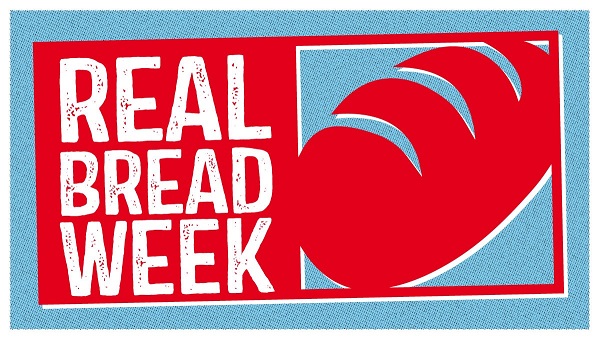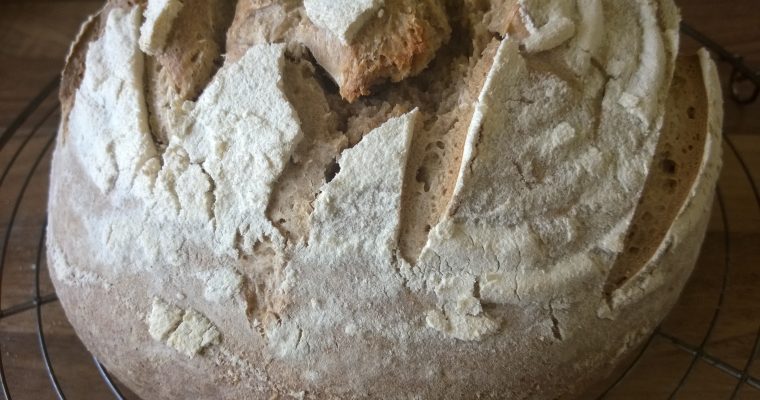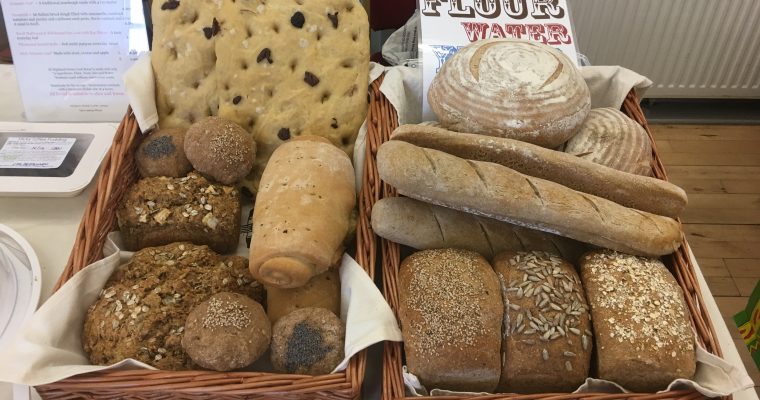Artisan bread, real bread, proper bread, these terms are sprinkled about like a flour shaker with little attention to what they mean, or why we’re using them.
At one time people made bread at home, or bought bread from a baker – someone who actually made fresh bread on their premises. These days most bread is made in factories by the ‘Chorleywood method’ – a quickly produced standard loaf that uses commercial yeast and various dubious ‘additives’. Flour in the UK has to be fortified by law because the bread that most people have access to in supermarkets is nutritionally poor. It’s a sad state of affairs for a basic commodity which many people rely on. All bread should contain, apart from flavouring ingredients, is flour, salt and water; time and love are the only additional ingredients needed to make a decent loaf. The rise of the so called artisan baker has come about as a result of people wanting real bread. Bread as it used to be. Not ‘worthy’ wholemeal loaves, necessarily, but exciting breads both continental and home grown, that use interesting flours, maybe seeds; breads that are made slowly with ferments and starters; sourdoughs and the like, where only time will allow them to develop their characteristic flavour.
There’s a bit of furore in the bread making community at the moment because there are no legal definitions for things like sourdough loaves. Supermarkets are getting on the bandwagon. They want in on the demand for ‘proper’ bread. What they supply to fill this demand should be regarded with suspicion. Look at the ingredients for a start. The fewest number of ingredients I counted were 6. However, ‘processing aids’ are not currently legally required to be declared on labelling. This is the definition of such additives:
‘Any substance not consumed as a food by itself, intentionally used in the processing of raw materials, foods or their ingredients, to fulfil a certain technological purpose during treatment or processing, and which may result in the unintentional but technically unavoidable presence of residues of the substance or its derivatives in the final product, provided that these residues do not present any health risk and do not have any technological effect on the finished product.’
There are six or seven such ‘aids’ which can be included, without being labelled, and they include such things as fungal and animal enzymes. Yum!
Quite apart from having non-food items in your sourdough loaf, you may also not technically have any sourdough in it either. It is extremely unlikely that your local supermarket has a sourdough starter, which has been lovingly fed for years; it is also unlikely that they are going to spend three days making a loaf of bread. So how do they get away with calling it sourdough? Because there is no legal definition as to what a sourdough loaf must constitute. My sourdoughs have a rye or wheat starter, both lovingly curated over months and years. The loaves take three days of processing by hand. Time is what makes a sourdough loaf of bread. Time and the starter. Without these two ingredients, in my view, and the view of many of my fellow artisan bakers, a loaf should not be called a sourdough. The proof is in the eating. You may be able to buy a so-called sourdough from the supermarket for under £2, but it won’t taste like sourdough; it won’t have the texture of a sourdough, and the likelihood is, it won’t technically be a sourdough! Artisan bread is more expensive. It takes time and experience to make. And physical hard work. I think it’s worth the extra. Try it. I think you will too.
So, as Real Bread Week approaches this weekend, seek out the real bread makers in your community and support them. The money you spend will benefit your community directly and you’ll be getting tasty #realbread into the bargain.
#realbread week 2018 is 24th February to 4th March
*Chorleywood Method
Bread is processed in high speed mixers with commercial yeast and often additives. Loaves are made speedily without allowing time for the ingredients to work together. Andrew Whitley believes this is what has lead to the increasingly indigestibility of industrial loaves. For more information see his article here:
https://www.theguardian.com/lifeandstyle/2008/apr/16/recipes.foodanddrink
For details of #realbread makers in your community, see here:
https://www.sustainweb.org/realbread/bakery_finder/
To find out more about #realbread or find out how you can support the campaign for #realbread see here:
https://www.sustainweb.org/realbread/#



